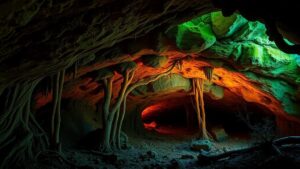Jade Dreams: Unearthing Green Gold in Mountain Ranges
Jade Dreams: Unearthing Green Gold in Mountain Ranges
For rockhounds and mineral collectors, few pursuits are as rewarding as the search for jade, particularly in mountainous regions known for their unique geology. Jade, often referred to as green gold, encompasses two distinct minerals: nephrite and jadeite. Each type has its own properties, value, and preferred sites of discovery. This article delves into the intricacies of jade collection, providing invaluable insights for enthusiasts eager to unearth this cherished gemstone.
The Allure of Jade
Jade holds a prestigious position in various cultures, most notably in China and Mesoamerica, where it is associated with wealth, status, and spiritual significance. Its stunning array of green hues, ranging from pale mint to deep emerald, coupled with its toughness–scoring between 6 and 7 on the Mohs hardness scale–makes it highly sought after.
Types of Jade
Understanding the two primary types of jade is crucial for collectors:
- Nephrite: Typically characterized by its creamy or dark green coloration, nephrite is mainly composed of tremolite. It is more abundant and generally less expensive than jadeite.
- Jadeite: Recognized for its vivid colors and higher rarity, jadeite is valued at significantly higher prices than nephrite. Its colors range from dark green to white, yellow, and lavender.
Geological Settings
Jade typically forms in metamorphic rocks, which are prevalent in specific mountain ranges. Here are some key locations to consider:
- Myanmar: Known as a global center for high-quality jadeite. The jade deposits here are primarily found in the Hukawng Valley.
- British Columbia, Canada: Home to substantial nephrite jade deposits. Cassiar Mountains are famous for producing high-grade nephrite.
- New Zealand: Renowned for its greenstone, a form of nephrite jade. The West Coasts mountainous regions are the ideal areas for exploration.
Collecting Jade: A Practical Guide
Embarking on a jade-hunting expedition requires preparation and knowledge. Here are some actionable tips for collectors:
- Learn Local Regulations: Always research and comply with legal requirements in your chosen area to avoid penalties.
- Invest in Proper Equipment: Essential tools include a prospectors pick, rock hammer, safety goggles, and sturdy shoes. Consider bringing a magnifying lens for identifying quality features in specimens.
- Know What to Look For: While deep green jade is desirable, clarity and translucence can also indicate high-quality jadeite. Use the finger test–lit jade will appear more translucent and vibrant when held against light.
Valuating Jade
When assessing the value of jade specimens, consider several factors:
- Color: Vivid green hues are the most sought after, but jadeite comes in a spectrum of shades.
- Texture: Fine-grained jade with a smooth and polished surface commands higher prices.
- Origin: Jadeite from Myanmar is generally more valuable than nephrite due to its rarity and desirability.
Real-World Applications
The value of jade extends beyond aesthetics; its utilitarian applications include:
- Jewelry: Rings, necklaces, and bracelets made from jadeite and nephrite are popular globally.
- Art and Sculptures: Both traditional and modern artists utilize jade for carving intricate sculptures and ornaments.
- Healing Practices: In some cultures, jade is believed to possess healing properties, promoting balance and overall well-being.
Conclusion: Embrace Your Jade Journey
Jade collection is more than a hobby; its a window into the wonders of geology and cultural significance. Whether you are a seasoned rockhound or just starting, understanding the nuances of jade–its types, geological sources, and valuation–can enrich your collection and appreciation of this mesmerizing gem. Armed with knowledge and the right tools, every expedition can feel like a treasure hunt, leading you to your own green gold. Happy hunting!


